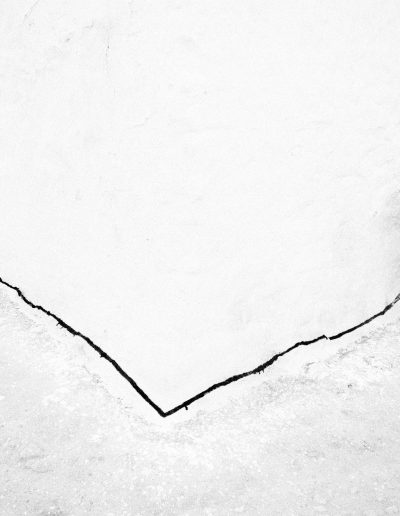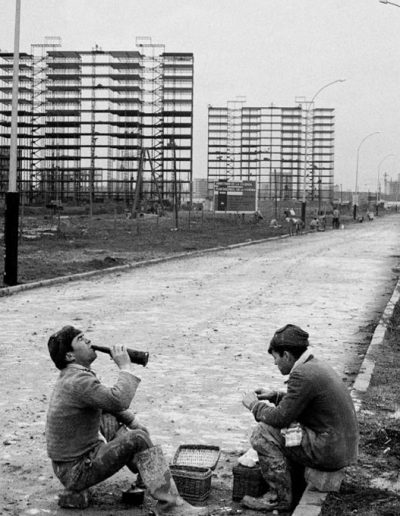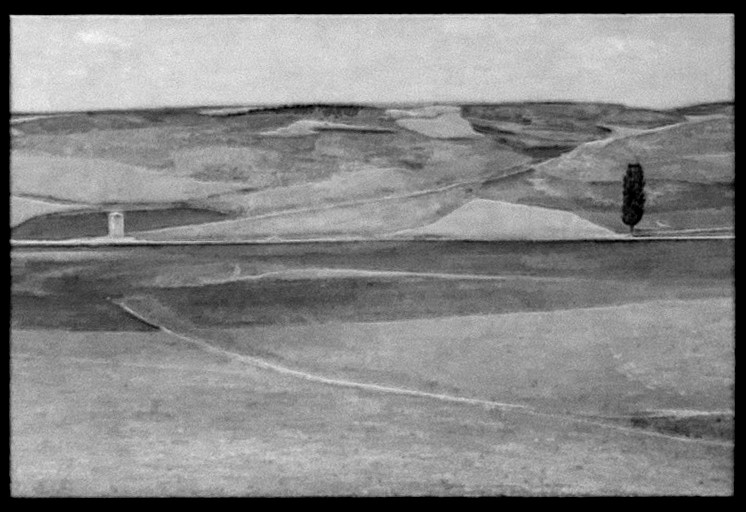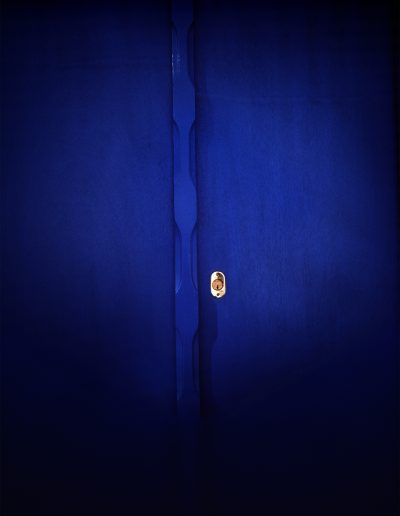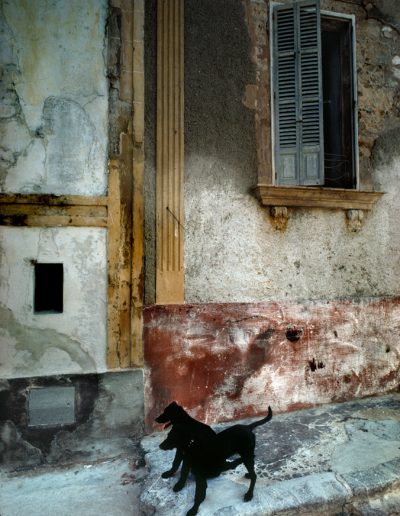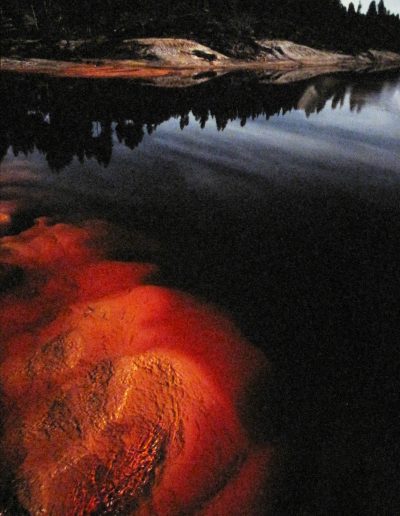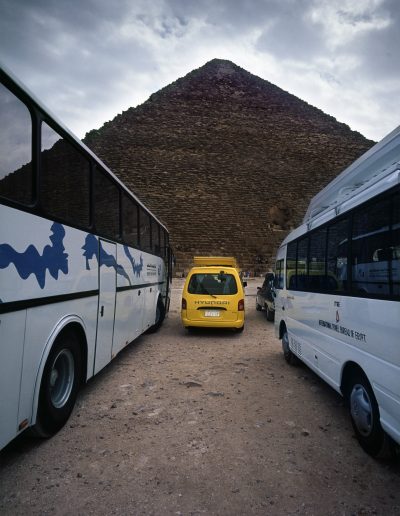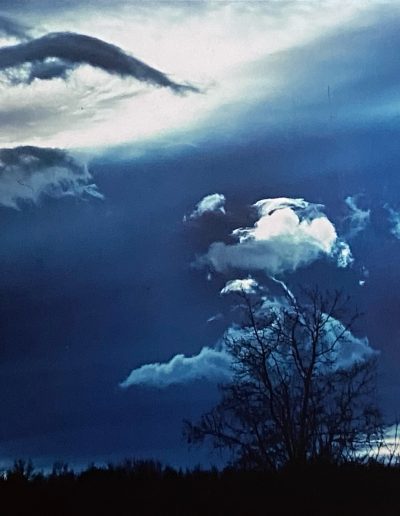
Ramón Masats
Un Don Innato
18.02.2023 – 20.05.2023
“Disparas sobre un vuelo de pájaros
y apenas alcanzas a uno.
Esta es la grande,
prodigiosa, insatisfactoria poesía.”
Josep Pla
Blanca Berlín abrió sus puertas en 2007 con una exposición de Ramón Masats (Caldes de Montbui, 1931), la primera de las siete dedicadas al autor. La elección no fue casual, sino toda una declaración de intenciones sobre el rumbo que aspiraba a transitar la galería, el de la mejor fotografía contemporánea nacional e internacional. Dieciséis años más tarde, hemos querido rendir un nuevo homenaje a la figura de este gran fotógrafo y para ello hemos contado con la colaboración de su hija Sonia Masats. En esta ocasión, se han planteado dos cuerpos de trabajo diferenciados por su cronología y su emplazamiento en la sala.
“You shoot on a flight of birds
and you barely hit one.
This is the great
prodigious, unsatisfactory poetry.”
Josep Pla
Blanca Berlín opened its doors in 2007 with an exhibition starring Ramón Masats (Caldes de Montbui, 1931), the first of seven dedicated to the artist. The choice was no coincidence, but rather a declaration of intention about the direction the gallery aspired to take, that of the best national and international contemporary photography. Sixteen years later we wanted to pay a new tribute to the figure of this great photographer, and for this we have counted on the collaboration of his daughter Sonia Masats, On this occasion, two bodies of work have been proposed, differentiated by their chronology and their location in the room.
Su primera etapa, entre 1953 y 1964, se resume mediante una selección de instantáneas en blanco y negro que ponen de manifiesto el carácter documental y la genialidad de este artista. Algunas apenas se conocen, pero otras se han convertido en iconos de la fotografía española.
His first period, between 1953 and 1964, is summarised in a selection of black-and-white snapshots that reveal the documentary nature and genius of this artist. Some are hardly known, but others have become icons of Spanish photography.
Arcos de la Frontera, Cádiz, 1959
Gelatina al clorobromuro de plata con tratamiento de archivo al selenio
“La foto del perro y el pie está hecha para el que sería el libro de Sanfermines cuando todavía era amateur”, nos cuenta, “Vivía con mi familia en Tarrasa y trabajaba en la bacaladería de mi padre. Ya tenía una Leica y una Pentax Spotmatic. Quería probarme como reportero y me fui a Pamplona. Para conocer la fiesta me aceptaron en una peña, pero puse como condición el no tener que beber. Me lo permitieron, a condición de que no probara la bota de ninguna otra peña. Al final terminé cogiéndome una cogorza de campeonato y no podía ni moverme. No hacía más que ver pasar ante la cámara fotos estupendas sin ser capaz de capturarlas. Me fui a Paris a enseñar el reportaje a la agencia Magnum, les gustó y me pidieron que lo completara, pero no me lo pude financiar y mi padre tampoco me ayudó, por lo que la posibilidad de ingresar en Magnum ahí se quedó, en vía muerta.”
«The photo of the dog and the foot was taken for what was to become the Sanfermines book when I was still an amateur», he tells us, “I lived with my family in Tarrasa and worked in my father’s bacaladeria. I already had a Leica and a Pentax Spotmatic. I wanted to try my hand as a reporter, and I went to Pamplona. To get to know the “fiesta”, they accepted me into a “peña”, but I made it a condition that I didn’t have to drink. They allowed me, on the condition that I didn’t try the “bota” of any other “peña”. In the end, I ended up getting so drunk that I couldn’t even move. All I could do was watch great photos pass in front of my camera without being able to capture them. I went to Paris to show the report to the Magnum agency, they liked it and asked me to complete it, but I couldn’t finance it and my father didn’t help me either, so the possibility of joining Magnum stayed there, in a dead end.»
La profesionalización, sin embargo, no tardaría en llegar. En 1957 se trasladó a Madrid y empezó a trabajar en La Gaceta ilustrada y, posteriormente, en la Secretaría de Turismo. También ingresó en el Grupo AFAL, creando con sus amigos Cualladó, Ontañón y Paco Gómez, entre otros, el grupo fotográfico La Palangana. “No éramos conscientes de que estábamos retratando una época. Nos pateábamos los barrios y los pueblos cercanos y después nos enseñábamos las fotos. En uno de los encuentros dije de coña lo de la palangana y así se bautizó.”
Professionalization, however, would not be long in coming. In 1957 he moved to Madrid and began working as a professional at La Gaceta ilustrada and later at the Ministry of Tourism. He also joined the AFAL Group, creating with his friends Cualladó, Ontañón and Paco Gómez, among others, the photographic group La Palangana. “We were not aware that we were portraying an era. We would wander around the neighborhoods and nearby towns and then we would show each other the photos. In one of the meetings, I jokingly said the name “palangana” and that’s how it was baptised”.
Una de sus obras más icónicas es la del seminarista.
“El cura párroco de Atocha contactó conmigo para hacer un reportaje sobre la vida en el Seminario Conciliar de Madrid. Se publicó en la Gaceta Ilustrada. El gol lo metió de chilena levantándose la sotana, según contó el autor del disparo que, curiosamente, no aparece en la imagen. La foto la hice con una cámara Leica. Normalmente solo hacía un disparo, pero en esta ocasión recuerdo que fueron 10 o 15 hasta que conseguí la que estaba buscando. Al cabo de los años el portero, que sigue siendo sacerdote, contactó conmigo. En una entrevista comentó que si hubiera llevado chándal seguro que la habría parado. Un día, hace relativamente poco, volví al mismo lugar y a pesar de estar prácticamente igual no lo reconocí. Los seminaristas vestían ropa deportiva y los árboles se habían vuelto enormes. Y, por cierto, no supe que fue gol hasta varios años después cuando, ampliando mucho la foto, pude ver que la pelota había sobrepasado la mano.”
One of his most iconic works is that of the seminarian.
“The parish priest of Atocha contacted me to do a report on life in the Counciliar Seminary in Madrid. It was published in La Gaceta Ilustrada. The goal was scored with a scissor kick, lifting his cassock, according to the author of the shot who, curiously, does not appear in the image. I took the photo with a Leica camera. Normally, I would only take one shot, but, on this occasion, I remember there were 10 or 15 until I got the one I was looking for. Years later the goalkeeper, who is still a priest, contacted me. He commented that if he had been wearing a jumpsuit, he would surely have stopped it. One day, relatively recently, I returned to the same place and despite the fact it was practically the same, I didn’t recognize it. The seminarians were wearing sports clothes and the trees had become huge. And, by the way, I didn’t know it was a goal until several years later when, enlarging the photo a lot, I could see that the ball had gone over the hand.»
Sobre la foto de la mujer de Tomelloso, nos comenta que seguramente estaría haciendo un reportaje sobre La Mancha para la Secretaría de Turismo. Pasando por la calle vio a esta señora pintando en el suelo una raya de color azul añil, ella lo miró y siguió a lo suyo, ignorándole por completo. Siempre se ha preguntado para qué serviría aquella marca, pues era raro que no tuviera una utilidad práctica concreta. Un día, comiendo con unos amigos, alguien dijo que creía que era para proteger las bodegas de bichos. Rafael Sánchez Ferlosio, presente en la comida, planteó la duda de quién era realmente el artista en la foto: si la señora o el fotógrafo. Esta imagen anticipa la deriva geométrica que Masats irá experimentando en su obra y que supone la actualización de un lenguaje típicamente documentalista hacia formas más modernas. Un fragmento de la misma ha sido elegido como logotipo por el futuro Centro Nacional de Fotografía que se está gestando en Soria. Todo un reconocimiento hacia este gran fotógrafo de la generación dorada de los años cincuenta y sesenta, al que incluso muchos de sus componentes han reconocido como una de sus figuras más destacadas.
Regarding the photo of the woman from Tomelloso, he tells us that he was surely doing a report on La Mancha for the Ministry of Tourism. Passing along the street, he saw this lady painting an indigo-blue stripe, she looked at him and went on with her business, completely ignoring him. He always wondered what that line was for, as it was weird that it had no specific practical utility. One day, while eating with some friends, someone said they thought it was to protect the cellars from bugs. Rafael Sánchez Ferlosio, who was present at the meal, raised the question of who really the artist in the photo was: the lady or the photographer. This image anticipates the geometric drift that Masats will experience in his work and which supposes the updating of a typically documentary language towards more modern forms. A fragment of it has been chosen as the logo for the future National Photography Center that is being developed in Soria. This is a great recognition of this great photographer of the golden generation of the fifties and sixties, whom many of its members have recognized as their most outstanding figure.
Tras dieciocho años de dedicación a la dirección de cine y televisión, regresa a la fotografía. Entre 1981 y 2006, su narrativa visual está protagonizada por el color y se ha vuelto más abstracta, geométrica y conceptual. Sus paisajes apenas están habitados y las diagonales, que siempre han constituido una seña de identidad de su labor fotográfica, se apoderan ahora de la escena, que se vuelve aún más vibrante por el intenso colorido que les aporta el Cibachrome (un proceso de revelado que permite convertir diapositivas color en copias sobre papel).
After eighteen years as a film and television director, he returned to photography. Between 1981 and 2006, his visual narrative is dominated by color and has become more abstract, geometric and conceptual. His landscapes are barely inhabited and the diagonals, which have always been a hallmark of his photographic work, now take over the scene, which is made even more vibrant by the intense color provided by Cibachrome (a developing process that allows color slides to be converted into paper prints).
De forma espontánea el fotógrafo catalán adapta su lenguaje al que le exigen los nuevos medios editoriales, para los que ya le piden que trabaje en color. “Solía llevar dos cámaras, una Hasselblad para el color y una Leica o una Nikon para el blanco y negro, esta última sobre todo para angulares, los objetivos que más me han gustado”, nos dice.
The Catalan photographer spontaneously adapts his language to that required by the new editorial media, or by the Ministry of Tourism, for which he is already being asked to shoot in color. “I used to carry two cameras, a Hasselblad for color and a Leica or a Nikon for black and white, the latter mainly for wide-angles lenses, the ones I liked the most”, he says.
Ramón Masats realizó su último reportaje en 2006 para el libro “Cuenca en la mirada”, con el que concluiría la obra de uno de los fotógrafos más emblemáticos, mordaces y transgresores de la fotografía española. En la dedicatoria de este libro se podía leer: “Para Publio, que se ha empeñado en hacerme trabajar”. Nunca más volvió a coger la cámara.
Ramón Masats made his last reportage in 2006 for the book «Cuenca en la mirada», which concluded the work of one of the most emblematic, sarcastic and transgressive photographers in Spanish photography. The dedication of this book reads: «For Publio, who has insisted on making me work». He never picked up a camera again.












